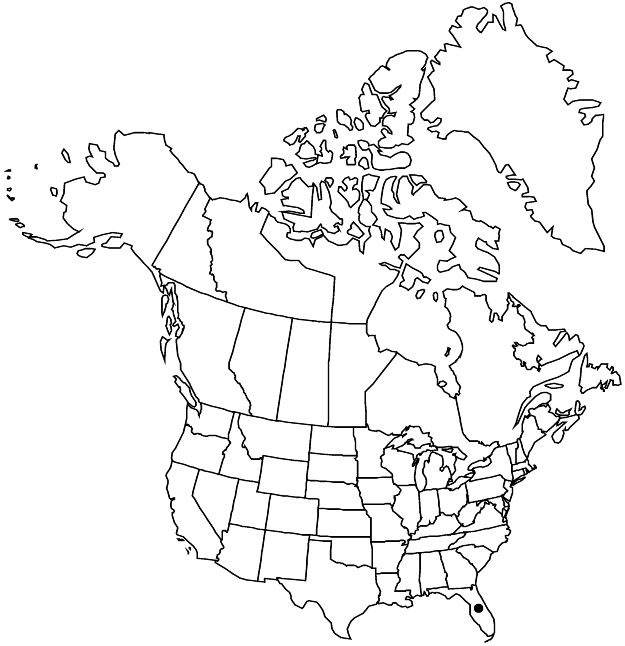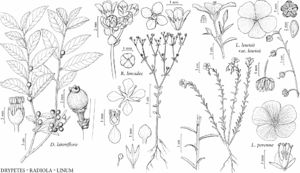Drypetes lateriflora
Bot. Jahrb. Syst. 15: 357. 1892.
Trees to 10 m. Bark light-brown, rough, separating into scales. Buds hairy, not resinous. Leaves: petiole 0.3–1 cm; blade lanceolate to narrowly ovate-elliptic, 4–12 × 1.5–5 cm, thick-papery, base obtuse to acute, margins entire or minutely serrate, apex usually abruptly acute to acuminate; venation finely reticulate. Staminate inflorescences: flowers 8–25 per fascicle. Pistillate inflorescences: flowers 1–5 per fascicle. Staminate flowers: sepals 4 (–5), ovate-elliptic, 1.5–2 mm, ciliate, otherwise sparsely hairy or glabrous; nectary deeply lobed; stamens 4 (–5). Pistillate flowers: sepals like those of staminate flowers; nectary lobed; ovary 2-carpellate; styles 2; stigmas 2. Drupes red-orange at maturity, ovoid to subglobose, 10–13 × 8–11 mm; mesocarp 1–2 mm thick, fleshy; endocarp 0.5 mm thick, brittle. Seeds usually 1 per fruit, sometimes 1 per locule.
Phenology: Flowering late winter–spring; fruiting spring–early summer.
Habitat: Tropical hammocks.
Elevation: 0–10 m.
Distribution

Fla., e Mexico, West Indies, Central America
Discussion
Fruits of Drypetes lateriflora apparently are removed by animals soon after they ripen; specimens with mature fruits are rarely collected. Drypetes lateriflora is more common on the Florida mainland than in the Keys.
Selected References
None.
Lower Taxa
"less" is not a number.
